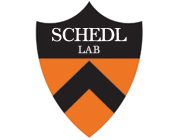The Drosophila CPEB protein Orb2 has a novel expression pattern and is important for asymmetric cell division and nervous system function.
Publication Year
2011
Type
Journal Article
Abstract
Cytoplasmic polyadenylation element binding (CPEB) proteins bind mRNAs to regulate their localization and translation. While the first CPEBs discovered were germline specific, subsequent studies indicate that CPEBs also function in many somatic tissues including the nervous system. Drosophila has two CPEB family members. One of these, orb, plays a key role in the establishment of polarity axes in the developing egg and early embryo, but has no known somatic functions or expression outside of the germline. Here we characterize the other Drosophila CPEB, orb2. Unlike orb, orb2 mRNA and protein are found throughout development in many different somatic tissues. While orb2 mRNA and protein of maternal origin are distributed uniformly in early embryos, this pattern changes as development proceeds and by midembryogenesis the highest levels are found in the CNS and PNS. In the embryonic CNS, Orb2 appears to be concentrated in cell bodies and mostly absent from the longitudinal and commissural axon tracts. In contrast, in the adult brain, the protein is seen in axonal and dendritic terminals. Lethal effects are observed for both RNAi knockdowns and orb2 mutant alleles while surviving adults display locomotion and behavioral defects. We also show that orb2 funtions in asymmetric division of stem cells and precursor cells during the development of the embryonic nervous system and mesoderm.
Keywords
Animals,
Mutation,
Sequence Homology, Nucleic Acid,
RNA, Messenger,
Transcription Factors,
Cell Line,
Female,
Male,
Embryonic Development,
Gene Expression Regulation, Developmental,
Embryo, Nonmammalian,
Ovum,
Cell Division,
Spermatozoa,
Spindle Apparatus,
Drosophila melanogaster,
Behavior, Animal,
Central Nervous System,
RNA Interference,
Larva,
Drosophila Proteins,
Ovary,
Genetic Loci,
DNA Transposable Elements,
mRNA Cleavage and Polyadenylation Factors
Journal
Genetics
Volume
189
Issue
3
Pages
907-21
Date Published
11/2011
ISSN Number
1943-2631
Alternate Journal
Genetics
PMID
21900268

